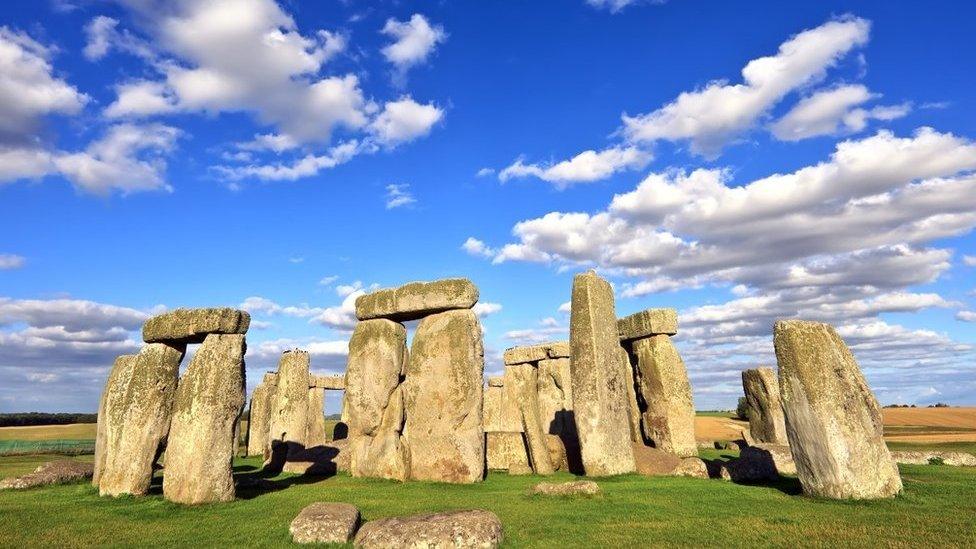Stonehenge: Did ancient 'machine' move stones from Wales?
- Published
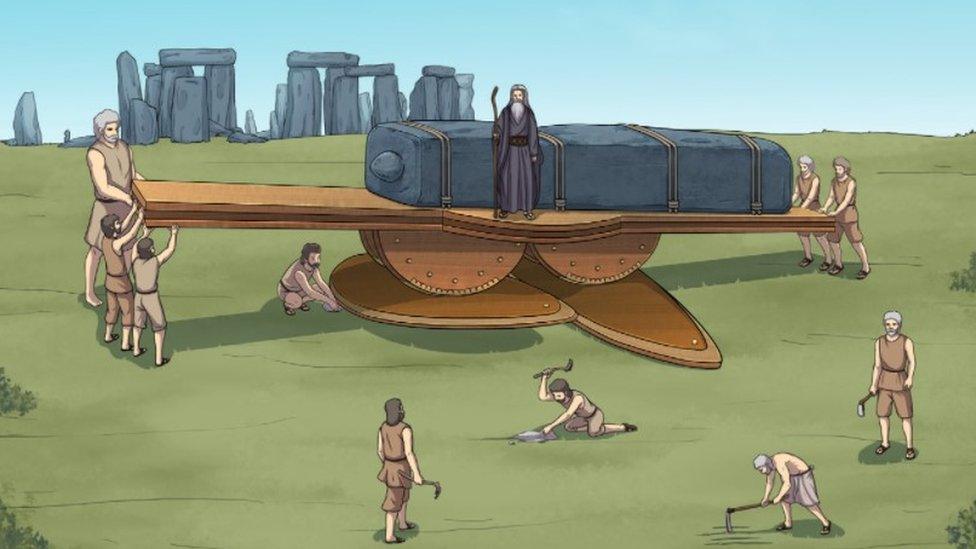
How Steven believes the machine could have looked - with the stone held over a circular board in the middle and wooden planks pulled sideways to propel the feet forward
It is a mystery that has confounded experts for centuries - how were huge stones transported 180 miles (290km) from the Preseli Hills to Stonehenge?
Some think humans, or even cows, pulled them to their resting place on Salisbury Plain.
However, a Denbighshire man believes it was a long-forgotten "machine" which appeared to defy gravity and was even possibly referenced in the Bible.
But a Stonehenge expert, external said manpower was the most likely explanation.
Carpet fitter Steven Tasker, 66, from Llanrhaeadr, became so interested in the Stonehenge mystery that he built a prototype of the what he believed the old machine would have looked like.
"It may look like something out of Last of the Summer Wine, but we've lifted a third of a tonne with it and theoretically it could move any weight," he said.
A lover of Ancient Egypt, Steven wanted to explain how the Pyramids were built - but believes his theory also sheds light on how stone circles were created on various sites, from Orkney's Skara Brae to Stonehenge.
It was on a trip to Cairo in 2004 that he started to consider whether some ancient artefacts were not what they appeared to be.
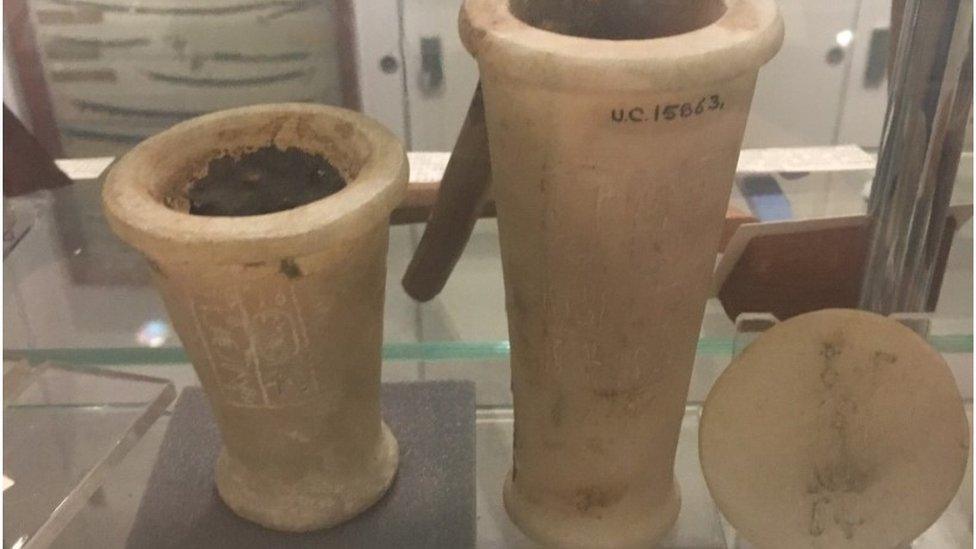
Jars for Egyptian eye make-up or rollers from a complex machine?
For example, what looked like eye make-up jars could have been stone rollers to help move objects.
There were also "rockers" assumed to be sleds for pulling items - however, Steven believes they could also be part of this complex machine.
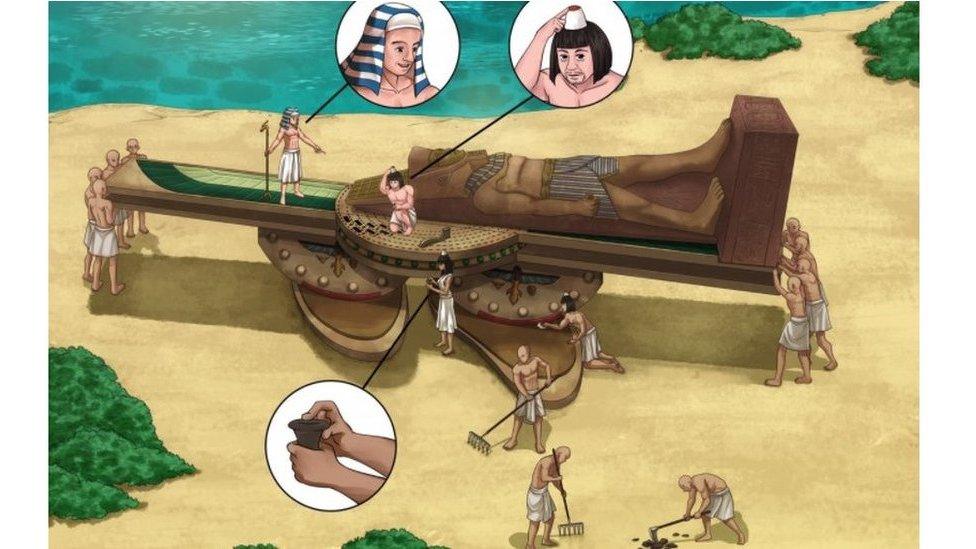
How Steven believes the machine would have looked - he believes the Egyptians could have kept animal fat in head cones to be used as lubricant on the stone rollers
"I tied rockers below a plank of wood to try and work out how they could have been used," he said.
"By using pivot points, I could counterbalance a 60kg roll of carpet on top and by using the rockers, walk it across the road.
"Pictures of statues are of them being dragged on sleds. But all statues have flat backs, so this machine would be an easy way to transport them, whatever the weight. A small team of men could do it."

Steven tested the prototype with his grandson: An important element were the ball bearings - such as those found at ancient sites - to stop the statue sliding off
Despite his beliefs, Steven's prototype gathered dust in his garage for 14 years, until 2018, when he went on a tour with Dr Campbell Price, curator of one of the UK's largest Egyptology collections at Manchester Museum.
Dr Price was impressed with his theory and invited him to give a talk, which encouraged Steven to continue researching.
A chance encounter at a holiday cottage, when he flicked through a copy of the Old Testament, then helped him form a clearer image of how the machine looked.
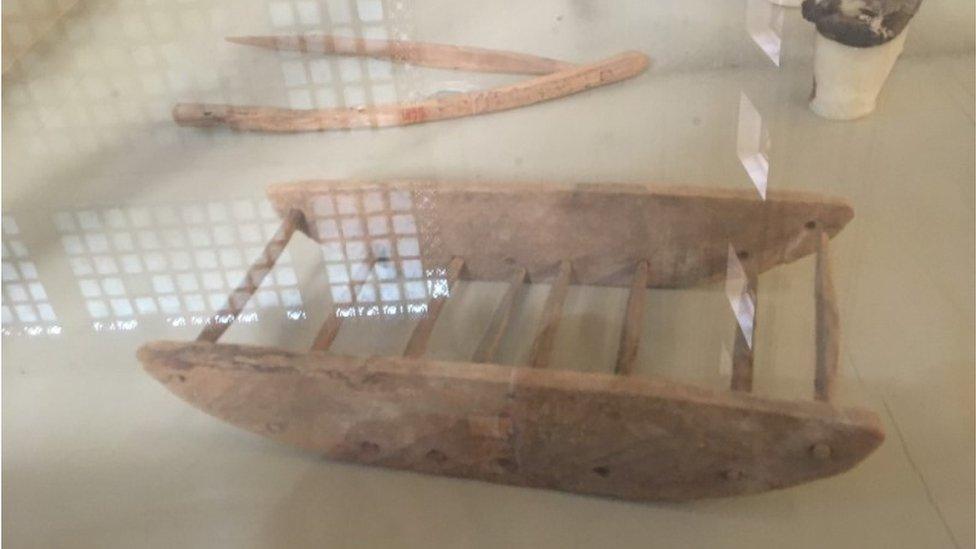
Steven believes rockers, long thought to have been part of a sled, could have been used in the machine
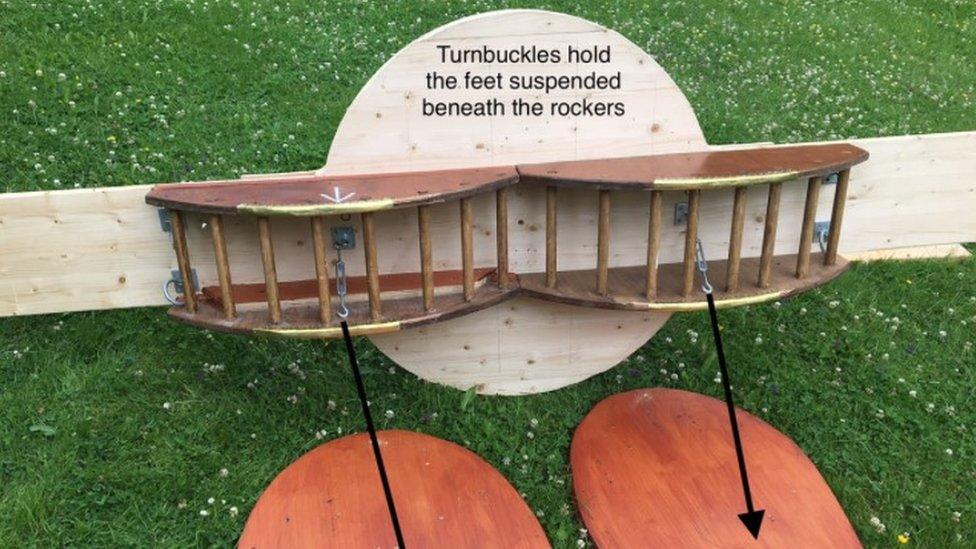
How Steven believes the rockers and wooden feet would have looked below the "wings"
In one passage, a prophet called Ezekiel describes a "vision of God being transported on cherubim", with four wings and "feet shaped like the sole of a calf's foot".
People were worshipping idols and unaware of science in 900BC, with Steven believing this is how the seemingly gravity-defying machine appeared.
The "four wings" being planks of wood moving either side, while the idea of "calf's feet" helped him further develop his prototype.
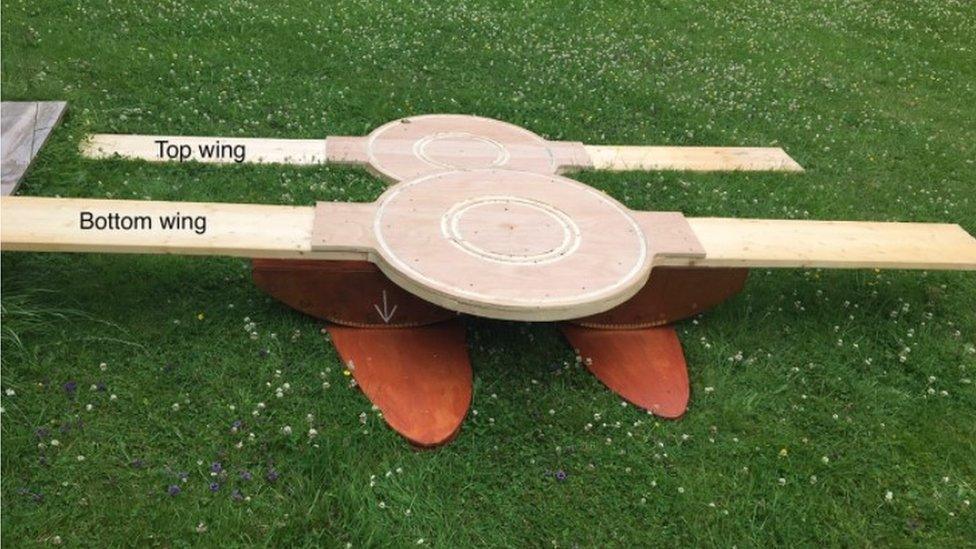
The "wings" were planks of wood used to propel the machine forward
Allow YouTube content?
This article contains content provided by Google YouTube. We ask for your permission before anything is loaded, as they may be using cookies and other technologies. You may want to read Google’s cookie policy, external and privacy policy, external before accepting. To view this content choose ‘accept and continue’.

"They (the feet) are an important part of the machine because the load's centre of mass is retained over them," he said.
"It gives the impression the machine is defying gravity, but like any trick of the eye, a clown leaning forward with his big shoes, it looks like magic."
Where did it originate?
Statues weighing 1,200 tonnes were transported in Ancient Egypt, leading Steven to believe the machine originated there.
However, the Standing Stones of Stenness, Orkney, which are 6m (19ft) tall, date back to 3,200 BC - 400 years before the Pyramids.

Built 5,000 years ago, Neolithic ceremonial site, the Ring of Brodgar, is the third largest stone circle in the British Isles
Egyptologist Laird Scranton found DNA of animal and plant species on Orkney, that led him to believe a group of Egyptian priests arrived in northern Scotland and other parts of the world to establish centres of learning.
They then taught people about seasons, farming and agriculture, he suggested.
"To do this you need a seasonal clock, thus stone circles," Steven said.
"In essence Stonehenge and stone circles are cosmological timepieces. They were used to take man from a society based on hunter gatherers, to a kingship society based on farming and animal husbandry."
How was Stonehenge created according to this theory?
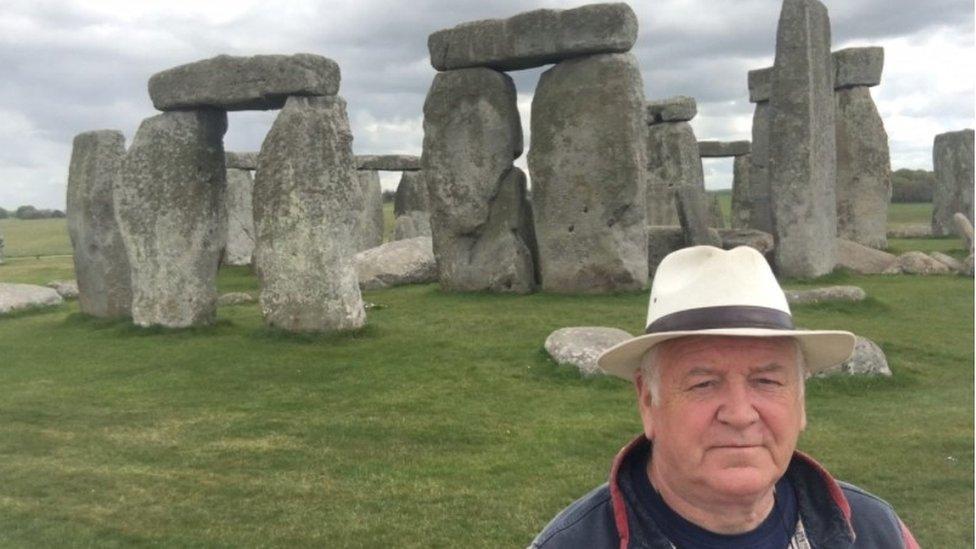
Steven recently visited Stonehenge as he developed his theory on how stones were moved
Steven believes large stones were moved throughout Britain to act as clocks, calendars and temples, with Stonehenge one of the most significant sites.
He estimates the machine would be able to travel 1.5 miles (2.4km) a day - meaning stones could be moved from the Preseli mountains in months.
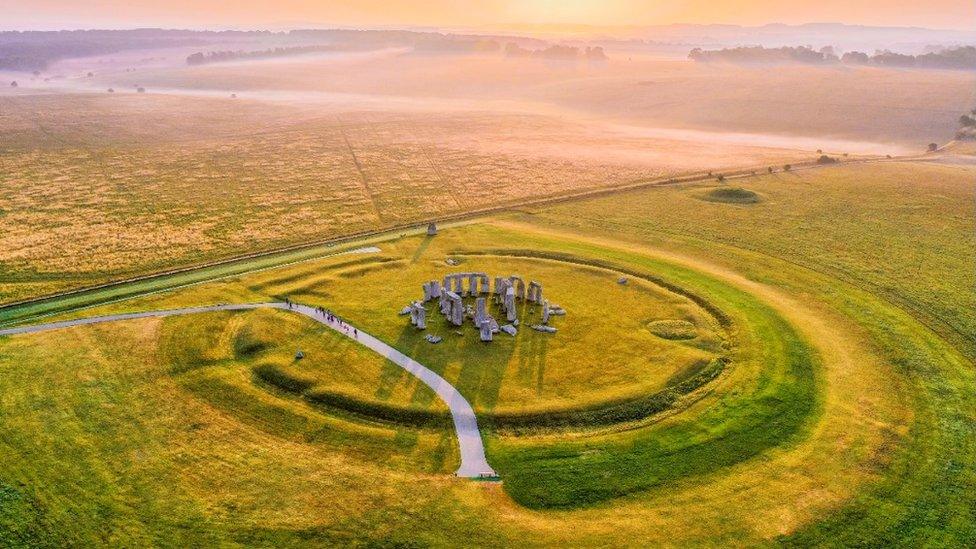
Steven believes the Aubrey Holes in a circle around Stone Henge could have been a giant diagram used to further evolve the machine
What sets Stonehenge apart is the circle around it, containing 56 chalk pits known as the Aubrey Holes, external.
Steven believes this could be a giant diagram of the board in the middle of the machine.
The Aubrey holes would represent ball bearings to hold statues in place, as efforts were made to improve it.
What do others think?
Engineer Shaun Whitehead, who led the Djedi robotic exploration, external of the Great Pyramid, said: "I'm often approached by people who have their own ideas about why and how these great structures were built.
"I'm careful not to dismiss any of these without a little thought, but most can be shown to be unworkable or impractical.
"However, Steven's theories on how massive objects could have been moved demonstrate a very creative and practical engineering mind."
While he said nobody knows for sure how they were moved, Steven's idea is "as good as any, and better than most".
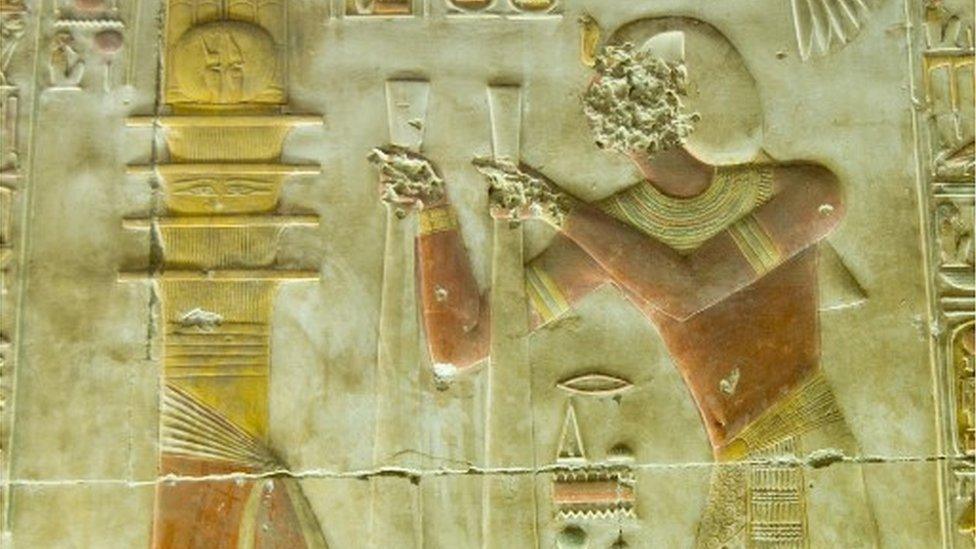
Steven believes the sacred Djed column - shown with Pharaoh Seti I making an offering to it - could in fact have been an engineering device
He added: "In Steven's theories, ancient Egyptian symbols such as the Djed pillar may not just be magical or spiritual representations - they may represent engineering devices.
"This makes sense - there was very little distinction between engineering genius and magic in ancient times."
But University College London Institute of Archaeology's Mike Parker Pearson, professor of British later prehistory, dismissed the theory.
"One of the huge misunderstandings [about Stonehenge] is how could you do something with a minimum of effort and maximum efficiency?" he said.
"That is a very 21st Century idea. There are no limits to 21st Century human ingenuity."
Moving the stones was by far most likely to be "simply manpower".
"It's a failure to understand megalith builders past and present used vast amounts of [human] labour.
"One of my researchers has actually calculated the amount of person power it would take to move the stones from Wales to Stonehenge," he said. "It's not as much as you might think."
He said he had worked on projects moving stones previously. "We have done this sort of thing in Madagascar - hundreds and thousands of people turned out. The whole issue is everybody wants to be involved."
Dr Campbell Price, external said the "efficient movement of large numbers of ancient monuments" has never been fully explained.
"Steve's experiments give a different perspective into how ancient people were able to plan paths of least resistance, and to manipulate natural forces," he added.

MABINOGI: LOST LEGENDS AND DARK MAGIC: Listen to the fantasy adventure series, based on medieval Welsh mythology
FIND SOME TIME TO READ: The Aberystwyth Book Club discusses Maggie O'Farrell's latest novel

Related topics
- Published12 February 2021

- Published12 February 2021
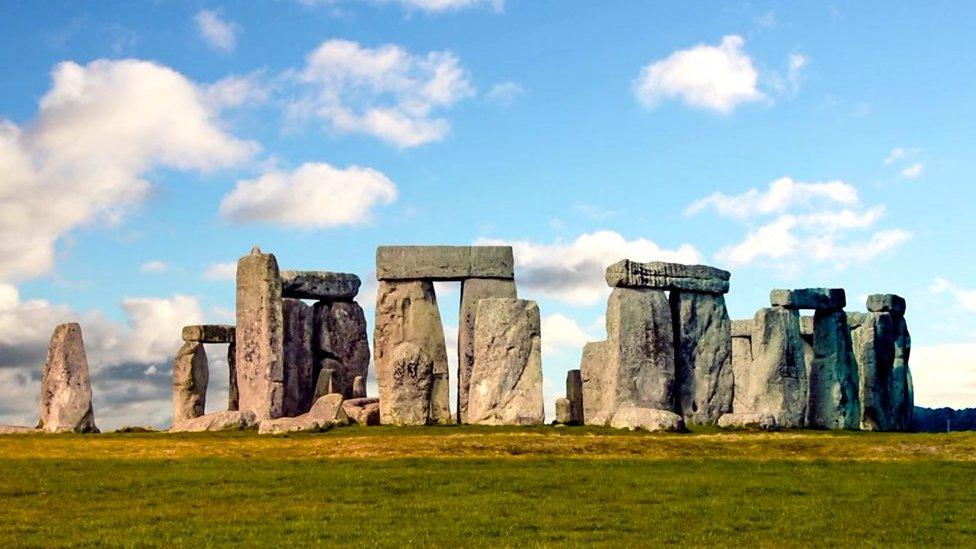
- Published2 August 2018
